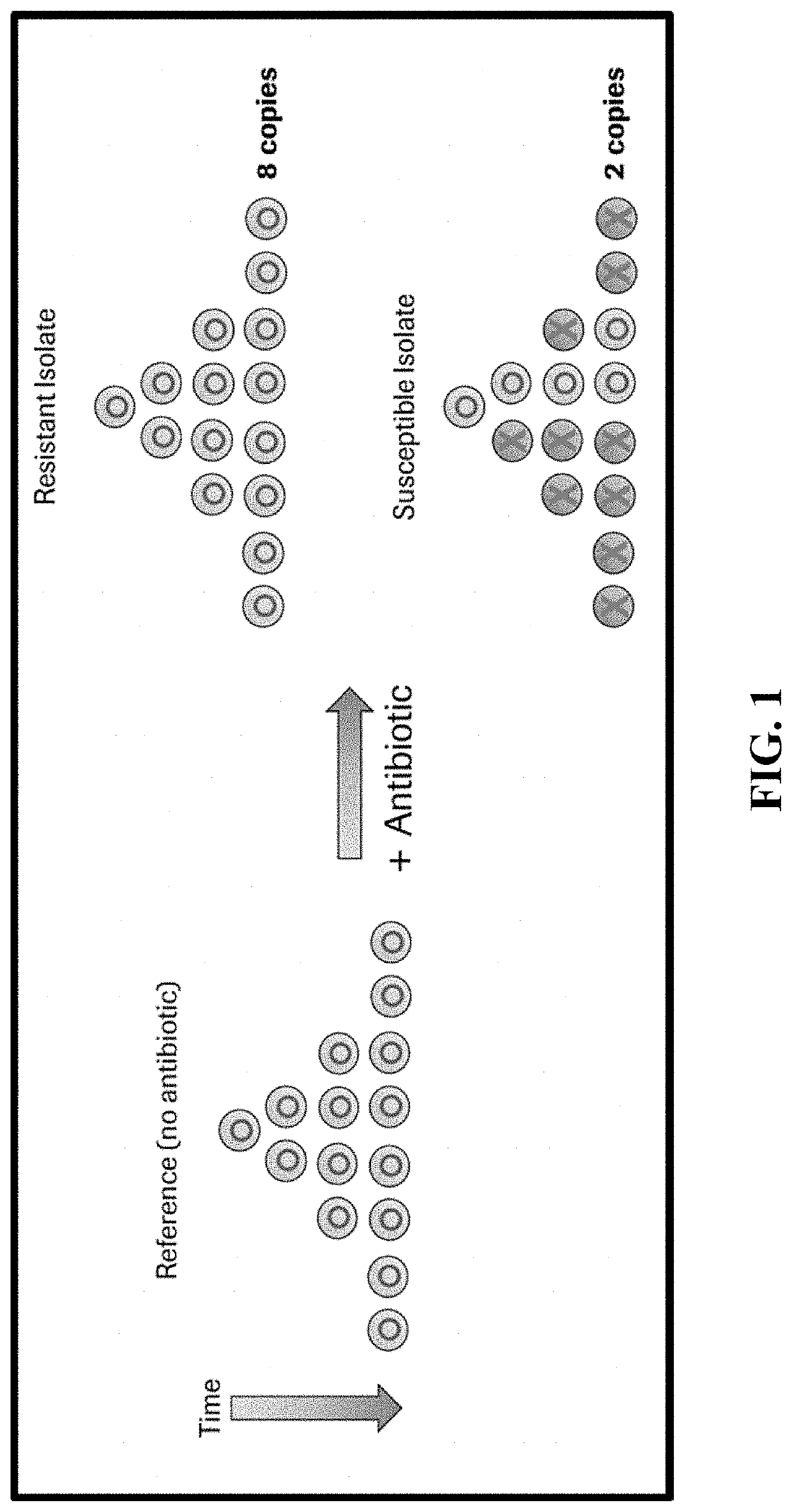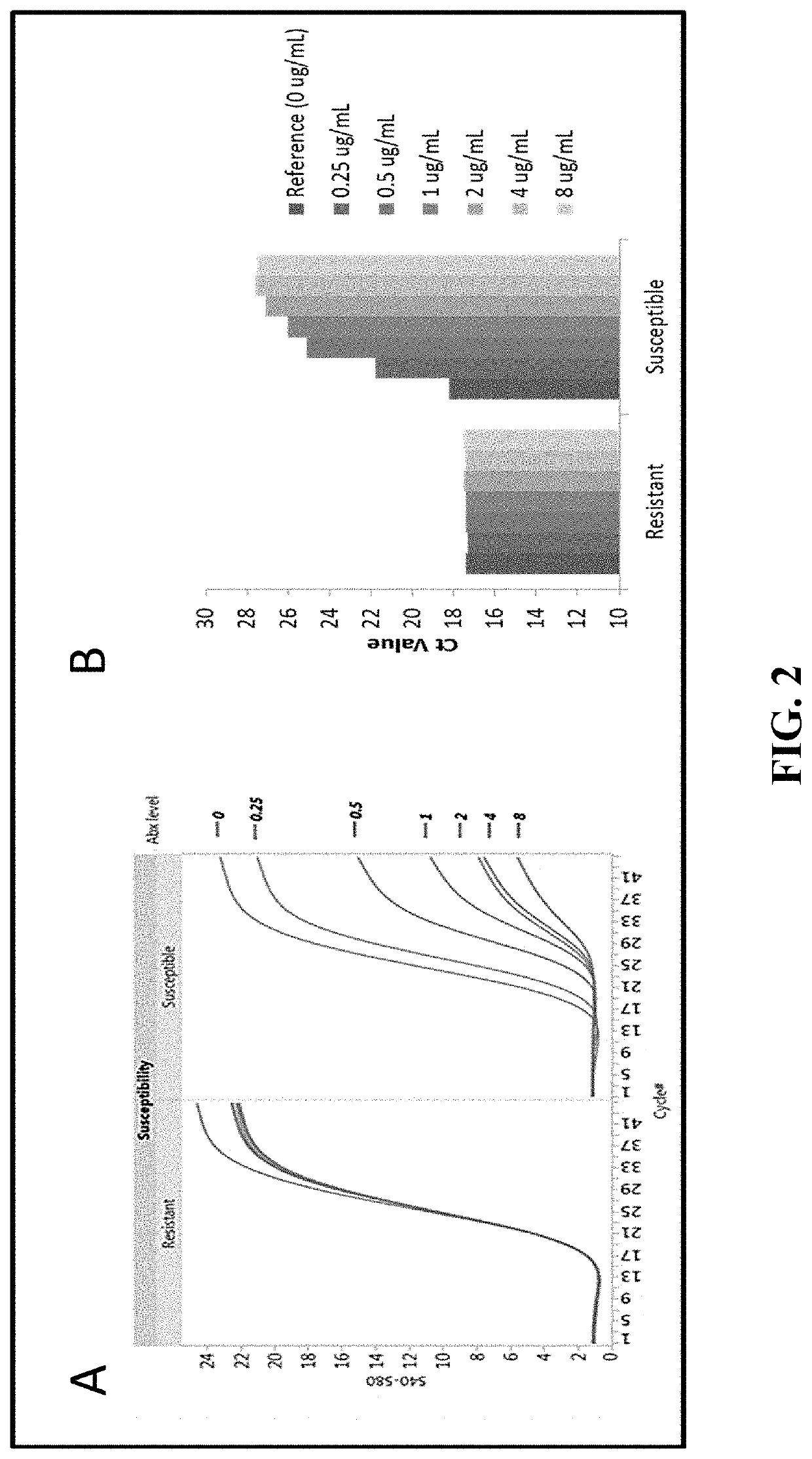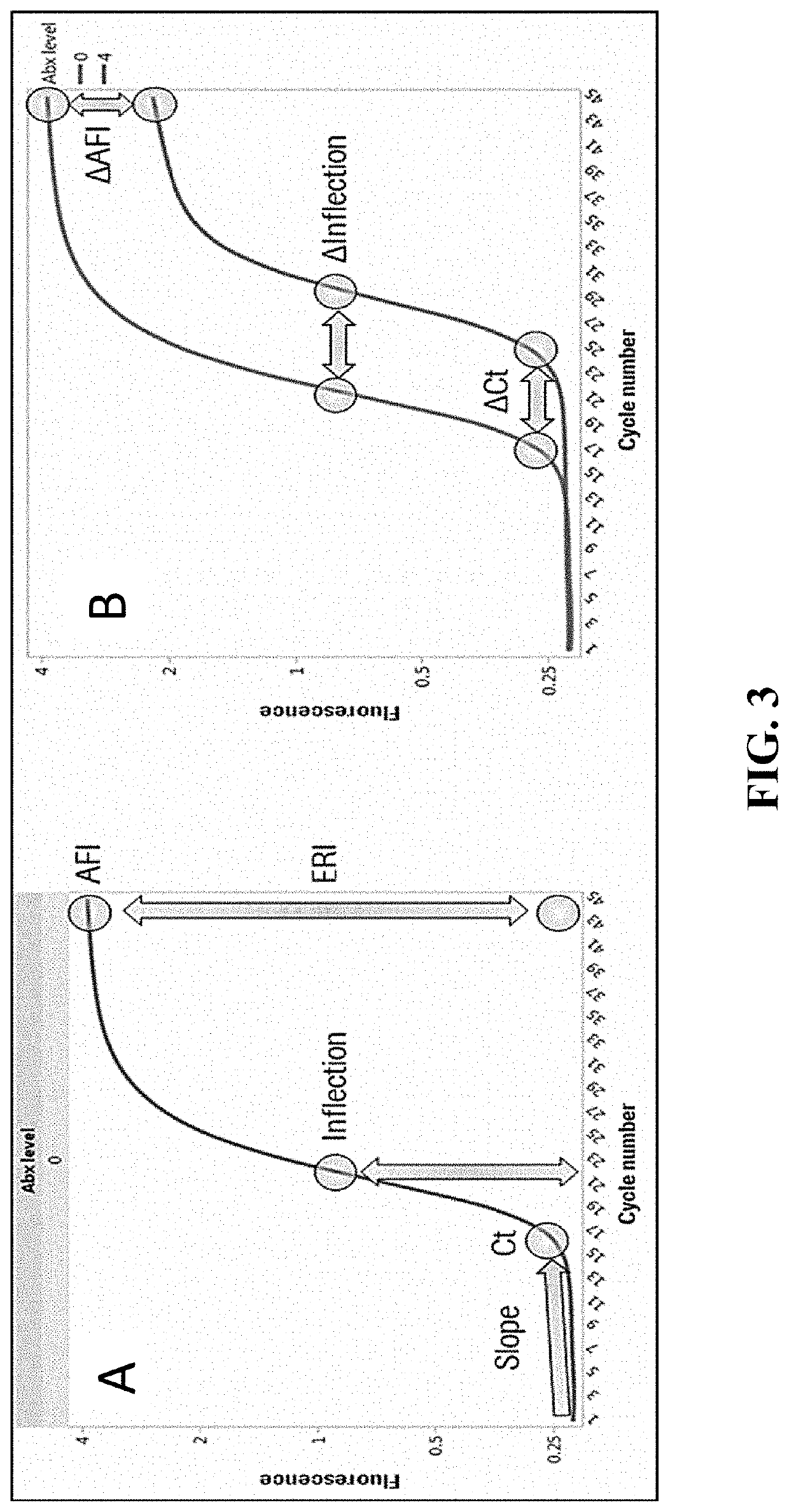Compositions and methods for rapid identification and phenotypic antimicrobial susceptibility testing of bacteria and fungi
a technology of phenotypic antimicrobial susceptibility and composition, applied in the field of molecular diagnostics, can solve the problems of reducing hospital costs and reducing length of stay
- Summary
- Abstract
- Description
- Claims
- Application Information
AI Technical Summary
Benefits of technology
Problems solved by technology
Method used
Image
Examples
example 1
PCR Conditions
[0149]Real-time PCR detection of target genes were performed using the Cobas® 6800 / 8800 systems platforms (Roche Molecular Systems, Inc., Pleasanton, Calif.). The final concentrations of the amplification reagents are shown below:
TABLE XXIXPCR Amplification ReagentsMaster Mix ComponentFinal Cone (45.0 uL)DMSO5.4%NaN30.027%Potassium acetate120.0mMGlycerol3.0%Tween 200.015%NaN30.027%Tricine60.0mMNTQ21-46AAptamer0.222uMUNG Enzyme10.0UZ05D-DNA Polymerase45.0UdATP400.0uMdCTP400.0uMdGTP400.0uMdUTP800.0uMForward primer oligonucleotides0.50μMReverse primer oligonucleotides0.50μMProbe oligonucleotides0.15μMManganese Acetate3.30mMTrizma Base12μMMethylparaben0.08%
[0150]The following table shows the typical thermoprofile used for PCR amplification reaction:
TABLE XXXPCR ThermoprofileProgram NameTarget (° C.)Acquisition Mode Hold (hh:mm:ss)Ramp Rate (° C. / s)CyclesAnalysis ModePre-PCR50None00:02:004.41None94None00:00:054.455None00:02:002.260None00:06:004.465None00:04:004.41st Measure...
example 2
PCR Using Primers / Probes for Detecting Enterobacterales Order
[0152]Using the PCR conditions described in Example 1, PCR assays using forward primer RM_ENTF (SEQ ID NO: 1), reverse primer RM_ENTRP (SEQ ID NO: 2) and both probes RM_ETP02 (SEQ ID NO: 3) and RM_ETP02B (SEQ ID NO: 4) that target the rplP gene were tested against five bacteria strains from the Enterobacterales order: E. Coli, K pneumonia, E. cloacae, S. marcescens, P. mirabilis, and two bacteria strains from non-Enterobacterales order: P. aeruginosa, and A. baumannii. The concentration of the starting material that used ranged between 1e8 and 5e8 CFU / ml for the culture fluid for all the strains (overnight cultures previously stored in glycerol) except for S. marcescens in which DNA (˜1e7 copies / up was used. No sample preparation was performed for the culture fluids. The results of this experiment showed that growth curves are observed only for the five strains of the Enterobacterales order family but not for the two non-E...
example 10
PCR for Detecting Common Gram-Negative and Gram-Positive Pathogens
[0170]PCR assays using forward primer SEGP1830 (SEQ ID NO: 94), reverse primer SEGP1831 (SEQ ID NO: 95) and probe SEGP1895.1 (SEQ ID NO: 96) that target the 16s gene were tested against common Gram-negative pathogens: E. coli, K pneumoniae, E. cloacae, K. oxytoca, K aerogenes, S. marcescens, P. mirabilis, S. maltophilia, P. aeruginosa, A. baumannii, and A. pittii. The concentration of the genomic DNA was roughly 2-10 ng / uL for all samples, besides the no template control that was 0 ng / uL. As shown on FIG. 28, amplification curves were observed for all Gram-negative pathogens, thereby demonstrating this particular combination of primers and probes for the detection of common Gram-negative pathogens.
[0171]This same combination of primers and probe that target the 16s gene was also tested against common Gram-positive pathogens: S. agalactiae, S. pneumoniae, S. pyogenes, E. faecium, E. faecalis, S. aureus, and S. epidermi...
PUM
| Property | Measurement | Unit |
|---|---|---|
| temperature | aaaaa | aaaaa |
| temperature | aaaaa | aaaaa |
| temperature | aaaaa | aaaaa |
Abstract
Description
Claims
Application Information
 Login to View More
Login to View More - R&D
- Intellectual Property
- Life Sciences
- Materials
- Tech Scout
- Unparalleled Data Quality
- Higher Quality Content
- 60% Fewer Hallucinations
Browse by: Latest US Patents, China's latest patents, Technical Efficacy Thesaurus, Application Domain, Technology Topic, Popular Technical Reports.
© 2025 PatSnap. All rights reserved.Legal|Privacy policy|Modern Slavery Act Transparency Statement|Sitemap|About US| Contact US: help@patsnap.com



